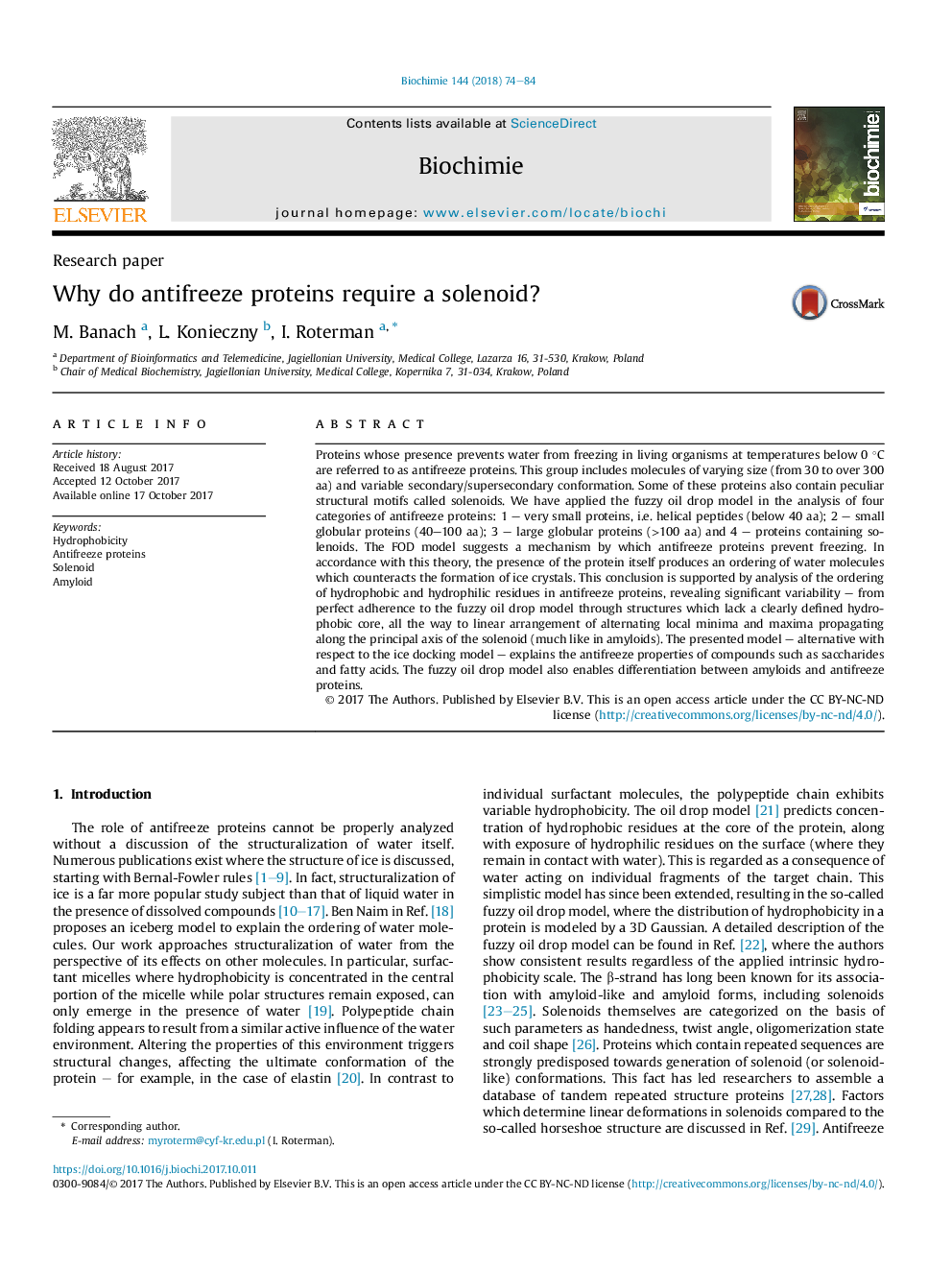| کد مقاله | کد نشریه | سال انتشار | مقاله انگلیسی | نسخه تمام متن |
|---|---|---|---|---|
| 8304263 | 1538388 | 2018 | 11 صفحه PDF | دانلود رایگان |
عنوان انگلیسی مقاله ISI
Why do antifreeze proteins require a solenoid?
دانلود مقاله + سفارش ترجمه
دانلود مقاله ISI انگلیسی
رایگان برای ایرانیان
کلمات کلیدی
موضوعات مرتبط
علوم زیستی و بیوفناوری
بیوشیمی، ژنتیک و زیست شناسی مولکولی
زیست شیمی
پیش نمایش صفحه اول مقاله

چکیده انگلیسی
Proteins whose presence prevents water from freezing in living organisms at temperatures below 0 °C are referred to as antifreeze proteins. This group includes molecules of varying size (from 30 to over 300 aa) and variable secondary/supersecondary conformation. Some of these proteins also contain peculiar structural motifs called solenoids. We have applied the fuzzy oil drop model in the analysis of four categories of antifreeze proteins: 1 - very small proteins, i.e. helical peptides (below 40 aa); 2 - small globular proteins (40-100 aa); 3 - large globular proteins (>100 aa) and 4 - proteins containing solenoids. The FOD model suggests a mechanism by which antifreeze proteins prevent freezing. In accordance with this theory, the presence of the protein itself produces an ordering of water molecules which counteracts the formation of ice crystals. This conclusion is supported by analysis of the ordering of hydrophobic and hydrophilic residues in antifreeze proteins, revealing significant variability - from perfect adherence to the fuzzy oil drop model through structures which lack a clearly defined hydrophobic core, all the way to linear arrangement of alternating local minima and maxima propagating along the principal axis of the solenoid (much like in amyloids). The presented model - alternative with respect to the ice docking model - explains the antifreeze properties of compounds such as saccharides and fatty acids. The fuzzy oil drop model also enables differentiation between amyloids and antifreeze proteins.
ناشر
Database: Elsevier - ScienceDirect (ساینس دایرکت)
Journal: Biochimie - Volume 144, January 2018, Pages 74-84
Journal: Biochimie - Volume 144, January 2018, Pages 74-84
نویسندگان
M. Banach, L. Konieczny, I. Roterman,